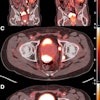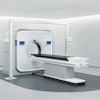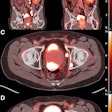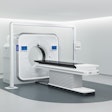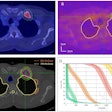Postmenopausal women who are older and thinner are more susceptible to developing pelvic fractures following radiation therapy for cervical cancer than younger, premenopausal women with larger body mass indexes, if patients treated at M. D. Anderson Cancer Center at the University of Texas in Houston over a six-year span are representative.
Approximately 10% of cervical cancer patients develop pelvic fractures following radiation therapy, according to a study quantifying the incidence of this late toxicity (Cancer, published online January 5, 2010). For more than 80% of these women, the fractures developed within two years of treatment completion.
A multidisciplinary team of gynecologic oncologists, radiation oncologists, radiologists, and cancer biologists analyzed the clinical records of 516 women identified through database searches who received treatment between January 2001 and December 2006. Of these, 300 women had at least one post-treatment CT or MRI exam, and none had a clinical history of prior pelvic fractures.
A research team led by principal investigator Dr. Kathleen Schmeler, assistant professor of gynecologic oncology, reviewed the patients' medical records to identify age at cancer diagnosis, menopausal status, body mass index (BMI), ethnicity, and smoking history, in addition to radiologic review of post-treatment diagnostic imaging exams.
The 300 patients ranged in age from 21 to 91 years (median age, 47.4 years). The majority were postmenopausal (59%) and nonsmokers (56%). Their BMI ranged from 15.5 to 58.2 kg/m2.
Summary of radiation therapy treatment
|
||||||||||||||||||||
| EBRT = external-beam radiation therapy; IMRT = intensity-modulated radiation therapy. |
Twenty-nine (9.7%) patients developed pelvic fractures, of which 38% were diagnosed within one year following treatment and 83% within two years.
No statistically significant differences were noted between women who developed fractures and those who were fracture-free with respect to disease stage, tumor grade, radiation therapy treatment, chemotherapy treatment, ethnicity, or smoking history.
However, women with fractures tended to be older, with a median age of 56.5 years compared to 46.7 years. Within the fracture group, 62% were menopausal, whereas only 37% were menopausal in the fracture-free group. Patients in the fracture group also had a lower median BMI (26.0 kg/m2 compared to 28.0 kg/m2).
Lower BMI is associated with decreased bone mass and is a risk factor for osteoporosis and pelvic fractures, attributed to lower stores of body fat and lower circulating estrogen levels, which help prevent loss of bone tissue, the authors noted.
One limitation acknowledged by the authors is that the patient cohort was followed for a median of fewer than two years. To help address the issue, M. D. Anderson Cancer Center has initiated a prospective study evaluating the incidence of pelvic fractures as well as changes in bone mineral density and serum markers of bone turnover of women receiving radiation therapy for gynecologic malignancies, they wrote.
Schmeler and colleagues also noted that women who receive radiation therapy might require bone mineral density screening and pharmacologic intervention.
By Cynthia E. Keen
AuntMinnie.com staff writer
February 2, 2010
Related Reading
Bone mineral density during strontium treatment reflects fracture rate, September 14, 2007
Copyright © 2010 AuntMinnie.com
